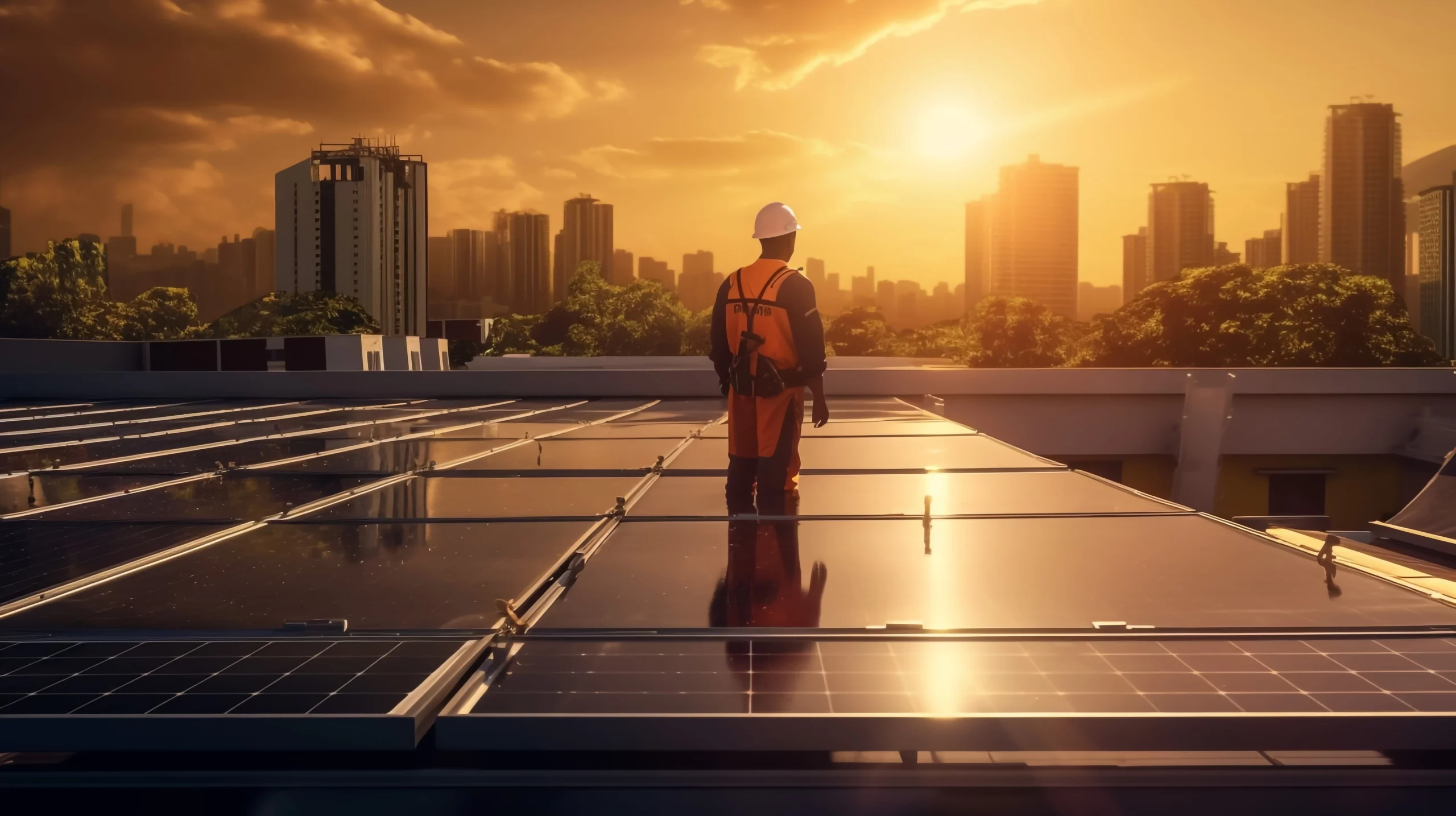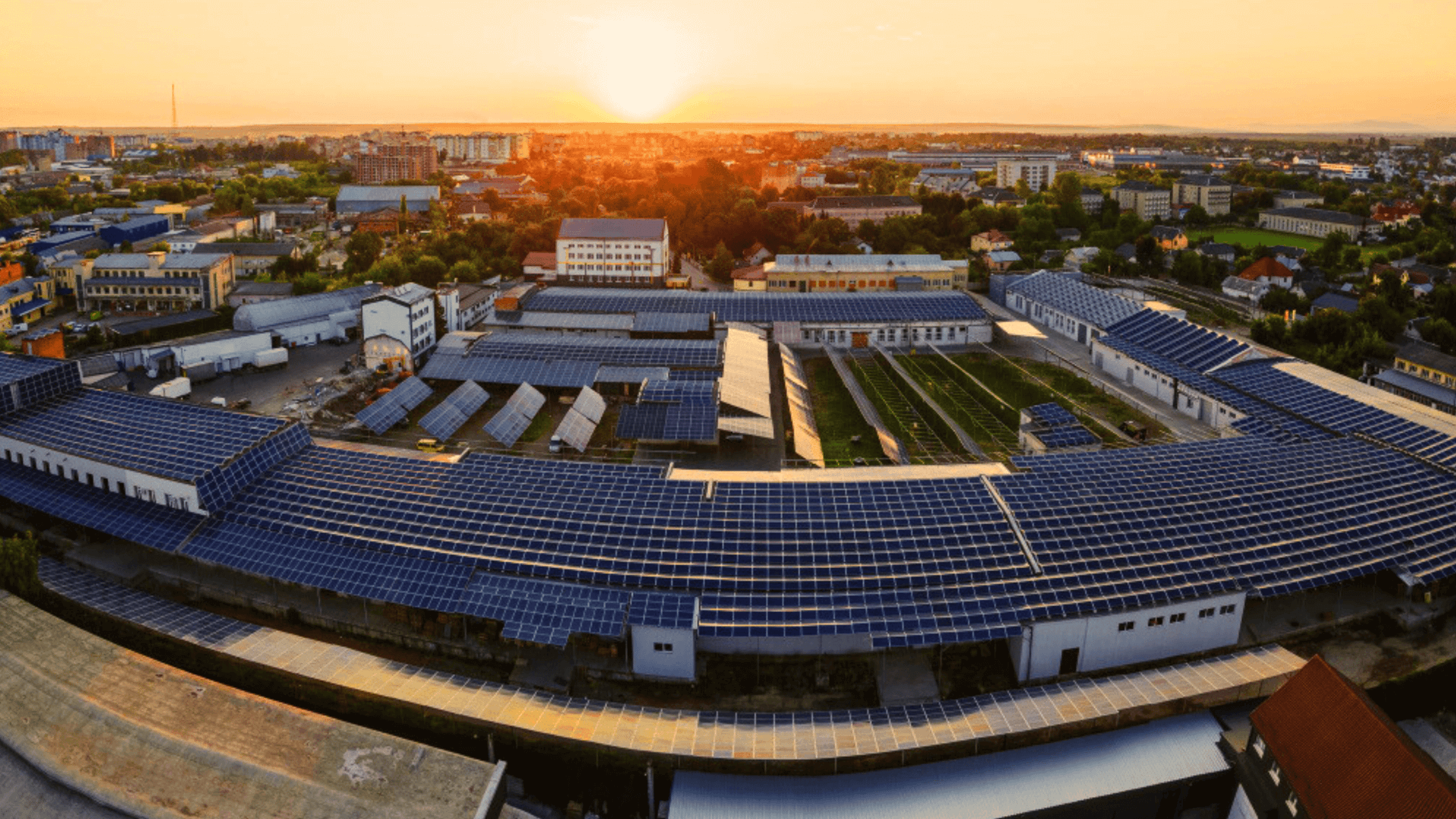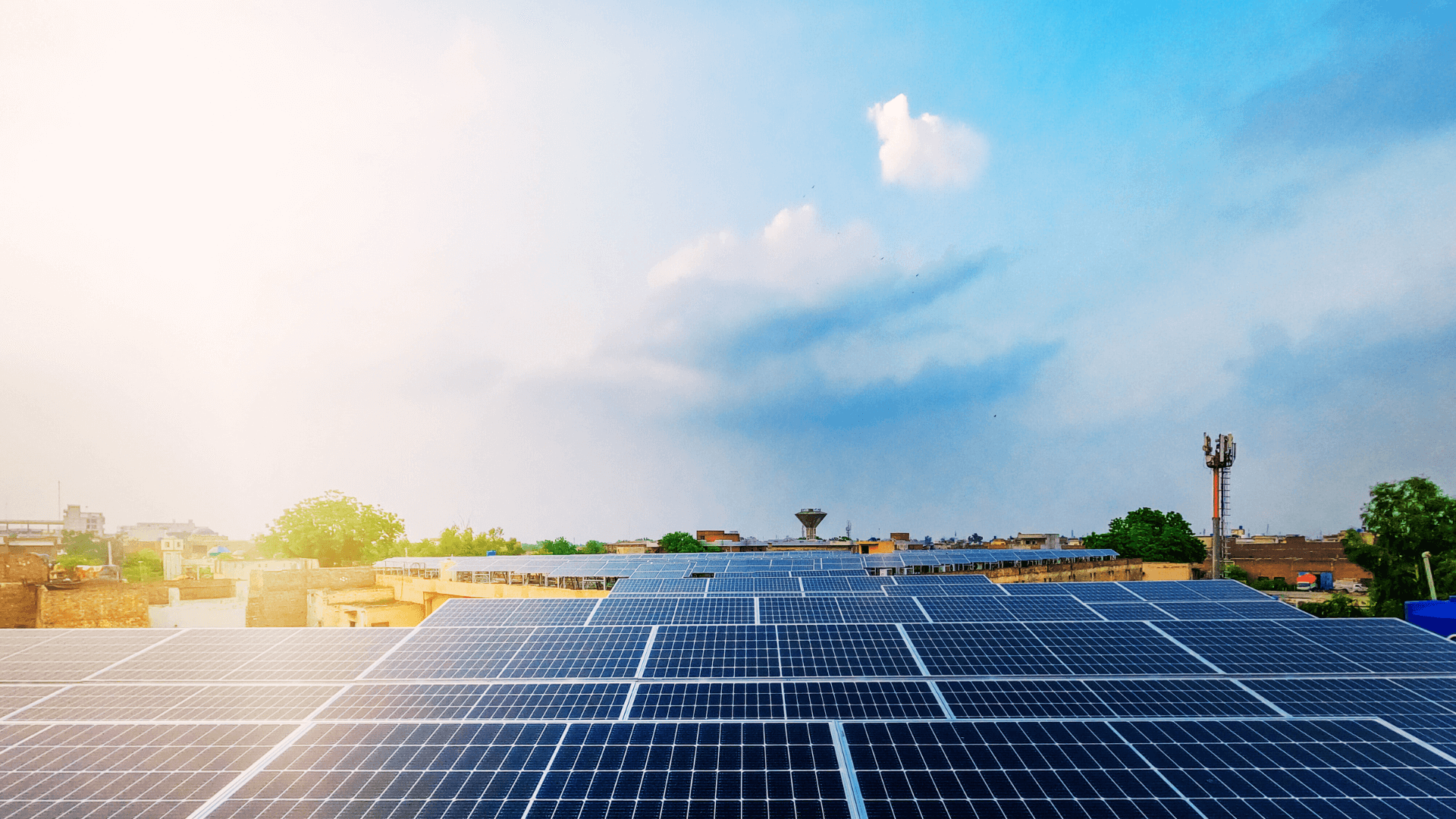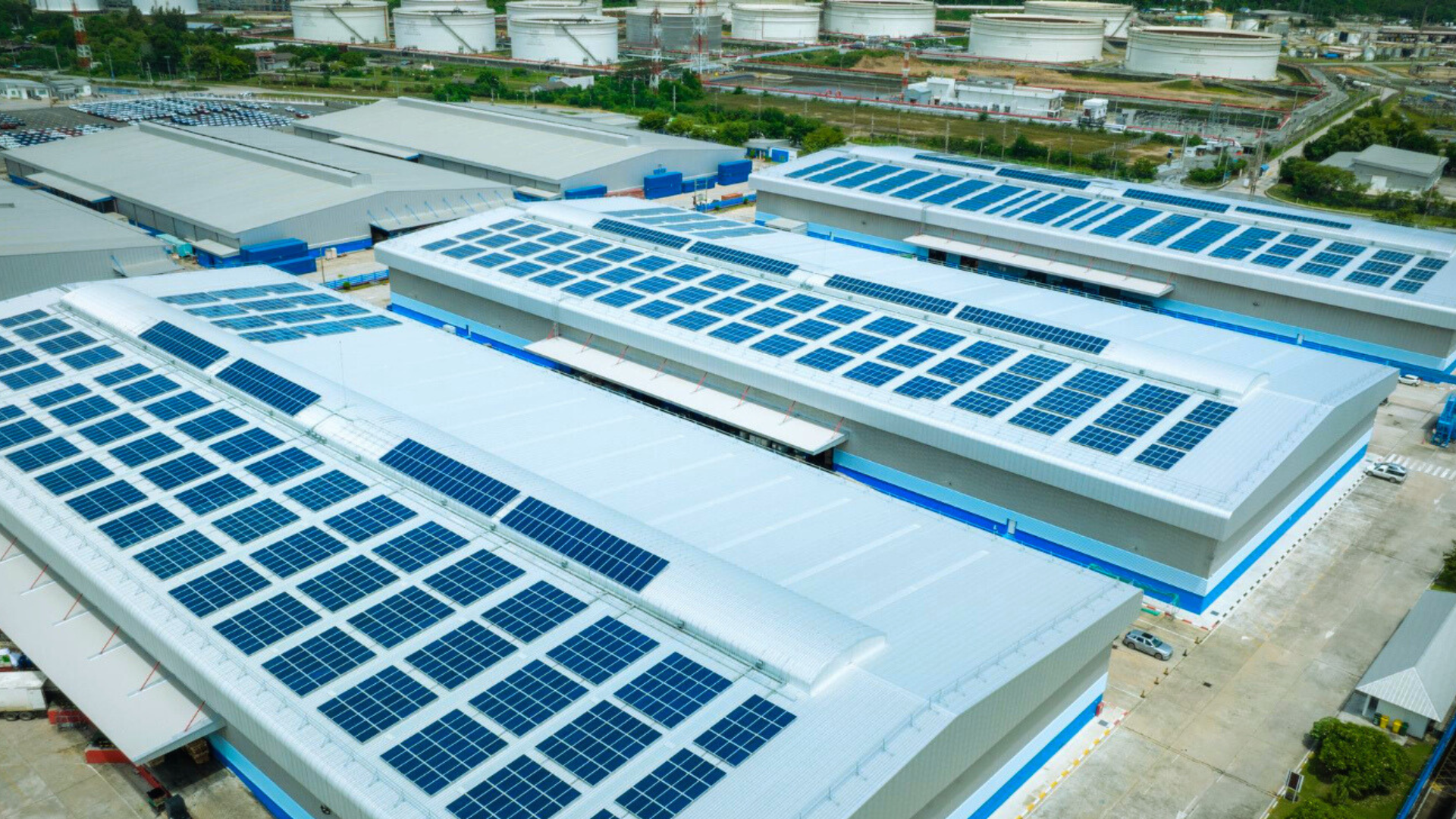In a world increasingly driven by the need for sustainable and renewable energy solutions, solar energy stands out as a beacon of hope and possibility. Not only does it offer a way to reduce our carbon footprint, but it also provides the remarkable ability to generate our own electricity. This blog delves into how solar panels, a key technology in harnessing solar power, can transform sunlight into a clean, efficient, sustainable, and green energy source for homes and businesses alike.
A Solar Power System Tailored to Your Energy Needs
A standard solar system setup comprises solar panels, solar inverters, batteries, Balance of System (BOS) components, and more. The scale of the solar power system is tailored to match your specific energy requirements.
Understanding Solar Energy
The science behind solar panels is both fascinating and simple. Solar panels consist of photovoltaic (PV) cells that convert sunlight directly into electricity. This process, known as the photovoltaic effect, captures solar photons and uses them to generate an electrical current. This clean energy can then power everything from small gadgets to entire households, making solar panels an essential component of modern sustainable living.
Preparing for Solar Installation
Before diving into the specifics of solar installation, it’s essential to assess your home’s energy efficiency and solar potential to ensure a successful and efficient transition to solar power.
Investigate Your Home’s Energy Efficiency
Before installing solar panels, it’s crucial to ensure your home is as energy-efficient as possible. This step involves assessing insulation, sealing leaks, and possibly updating appliances to more energy-efficient models. An energy-efficient home needs little to no electricity from the distribution board, which means you can maximise the benefits of your solar panel system.
Assess Your Solar Potential
Various tools and methods are available to help you determine your property’s solar potential. These assessments consider your location, the angle of your roof, and any potential shade from trees or buildings, providing a clear picture of how much solar power you can expect to generate.
Evaluate Your Needs and Solar Potential
Analysing your electricity needs is a vital step in the process. By understanding your current energy usage, you can better determine the size and type of solar panel system that will best meet your requirements, ensuring you invest in a system that matches your energy consumption patterns.
Assess Your Options
Solar energy can be harnessed through different types of systems, including on-grid, off-grid, and hybrid models. Each has its benefits and drawbacks, depending on your energy needs, location, and financial considerations.
Types of Solar Panel Systems and Installation
Exploring the various types of solar panel systems lays the groundwork for understanding the complexities involved in setting up your solar panels and choosing the right installation partner.
Types of Solar Panel Systems
On-grid systems are connected to the public electricity grid and can earn you credits for excess energy produced. Off-grid systems, meanwhile, are entirely self-sufficient but require batteries for energy storage. Hybrid systems combine the best of both worlds, offering flexibility and reliability.
Setting Up Your Solar Panels
The installation of solar panels involves several logistical and technical considerations. These include obtaining permits, choosing the correct placement for maximum sunlight exposure, and physically installing the panels themselves.
Choosing the Right Solar Panels and Installation Partner
Selecting the right solar panels and a reputable installer is crucial for the success of your solar project. Look for certified professionals with experience in solar installations, and consider factors such as efficiency, warranty, and manufacturer reputation when choosing your panels.
The Installation Process
The solar panel installation process typically involves site assessment, design and planning, obtaining necessary permits, the physical installation, and connection to the grid. Understanding this process can help set realistic expectations and prepare for a smooth transition to solar energy.
Financing and Maximising Your Investment
Understanding the various financing options is crucial for maximising your solar energy investment and ensuring long-term financial benefits.
Financing Your Solar Panel Installation
Several financing options are available to help cover the cost of solar panel installation. These include solar loans, leases, and power purchase agreements (PPAs), alongside incentives, rebates, and tax credits designed to make solar power more affordable.
Making the Most Out of Your Solar Panels
Optimising the performance and longevity of your solar panel system involves regular maintenance, monitoring energy usage, and making adjustments as needed. This ensures you get the most out of your investment over the system’s lifespan.
The Benefits of Solar Energy
There are numerous benefits of installing solar panels, including significant savings on electricity bills, energy independence, reduced environmental impact, and increased property values. Generating your own electricity with solar panels not only supports a sustainable future but also offers immediate and long-term financial rewards.
Conclusion
Adopting solar energy represents a significant step towards a more sustainable and self-sufficient lifestyle. By understanding the basics of solar energy, preparing for installation, choosing the right system, and exploring financing options like a rooftop solar loan, you can enjoy the numerous benefits that solar power has to offer. Optimising your solar investment becomes easier when you select the appropriate financial support, ensuring the journey towards harnessing the sun’s energy is both attainable and rewarding. As we look towards a future powered by clean energy, generating your own electricity with solar panels is not just a smart choice — it’s a bright one. Generating electricity with rooftop solar panels not only reduces your carbon footprint but also reduces your electricity bill.
Harnessing solar energy, an abundant renewable energy source, requires a high initial investment. However, this initial investment in solar panels yields a significant return on investment, making it a financially viable decision in addition to being environmentally responsible.
FAQs:
Can you install your own solar power system?
Yes, it is possible to install your own solar power system, known as a DIY (Do-It-Yourself) solar installation. However, this approach requires a thorough understanding of electrical systems, knowledge of local building codes and regulations, and the ability to safely work with solar panels and equipment. While DIY solar installations can save on labour costs, they might not be suitable for everyone. Professional installation is recommended for those who are not confident in their technical skills or for complex installations. Additionally, working with a professional installer ensures the system is correctly sized, efficiently installed, and complies with all regulations, which might also be necessary to qualify for certain incentives or rebates.
How do I get the most power from my solar panels?
To maximise the power output and minimise the electricity costs from your solar panels, consider the following strategies:
Optimal Placement: Install your solar panels in a location with maximum sun exposure, typically facing south in the Northern Hemisphere and north in the Southern Hemisphere.
Correct Angle: Adjust the tilt of your solar panels according to your location’s latitude to capture the most sunlight year-round.
Regular Cleaning: Keep the panels clean from dust, dirt, and debris, which can block sunlight and reduce efficiency.
Shade Management: Ensure there are no obstructions like trees or buildings casting shadows on your panels throughout the day.
System Maintenance: Regularly check for and repair any damage to your solar panels or wiring to maintain optimal performance.
Energy Efficiency: Improve your home’s energy efficiency to ensure that the power generated is used effectively, reducing waste.
Use a Solar Tracker: Consider installing a solar tracker system, which moves the panels to follow the sun’s path, increasing their exposure to sunlight.
Professional Assessment: Have a professional assess your system periodically to ensure it’s operating at peak efficiency and to make any necessary adjustments.
By implementing these strategies, you can significantly increase the power output and efficiency of your solar panels, ensuring you get the most benefit from your solar energy system.
How many solar panels does it take to generate electricity?
The number of solar panels needed to generate electricity depends on several factors:
Energy Consumption: The average household’s energy usage, typically measured in kilowatt-hours (kWh) per month.
Solar Panel Capacity: The power output of a solar panel, usually measured in watts (W). Common residential solar panels have a capacity ranging from 250 to 400 watts.
Sunlight Exposure: The amount of sunlight your location receives, factoring in geographical location, season, and any potential shade.
Panel Efficiency: The efficiency of the solar panel determines how well it converts sunlight into electricity.
As a simple example, if a household consumes 1,000 kWh per month and plans to use 300-watt panels that operate at an average efficiency in their location, you could estimate the number of panels needed using the formula:
Number of Panels = (Monthly kWh Consumption/Average Monthly Sunlight Hours)/Panel Wattage
It’s essential to conduct a detailed analysis considering the specific circumstances of your household and location to determine the precise number of panels required for your needs.
Is 1 kW enough to run a house?
Whether 1 kW (kilowatt) is enough to run a house depends on various factors, including the size of the house, the number and type of electrical appliances used, and the overall energy efficiency of the home. On average, a small to medium-sized home may consume between 15 to 30 kWh (kilowatt-hours) per day. A 1 kW system, under ideal conditions, can generate about 4 to 5 kWh of electricity per day, considering an average of 4 to 5 hours of peak sunlight. This amount of energy might be enough to power a very small home with minimal energy needs or to cover a portion of the energy consumption in a typical household, especially if it’s supplemented with energy efficiency measures. However, for most homes, especially those with higher electricity consumption, like those with electric heating systems or numerous appliances, 1 kW would not be sufficient to cover the entire energy consumption.




